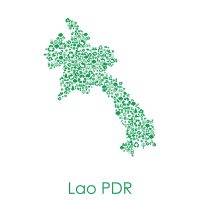2. Strategy for green development
The main objectives are to develop the potential to integrate green growth into the formulation and implementation of sectoral and local strategies and plans to ensure the achievement of long-term goals of national socioeconomic development set by the Party and the Government, such as: becoming an upper-middle-income economy according to green and sustainability criteria and achieving the Sustainable Development Goals (SDGs) by 2030.
To achieve these objectives and targets, the National Strategy examined and identified four cross-cutting areas, seven focused sectors for promotion and five support sectors.
The four cross-cutting areas are:
-
improve the investment environment and management system to make it more efficient and effective;
-
ensure rural development and poverty reduction to increase the living standards of rural populations, reduce the disparity between urban and rural areas and enable the most vulnerable social groups in rural areas to receive the benefits of economic growth in an inclusive and equitable manner;
-
gender equality, with a particular focus on enhancing roles and promoting women to more senior roles, in order to reduce the differences between men and women in all socio-economic fields;
-
reduce the risks and vulnerability of the economy to climate change and natural disasters.
The seven focused sectors are: (1) natural resources and environment, (2) agriculture and forestry, (3) industry and trade, (4) energy and mining, (5) public works and transportation, (6) information, culture and tourism, and (7) science and technology; and the five supporting or sustaining sectors are: (1) finance, (2) banking, (3) education and sports, (4) labor and social work, and (5) health.
